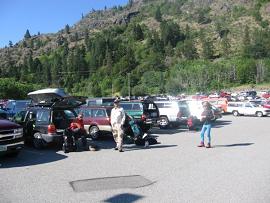
(photo by Greg Slayden)

|
|
Parking at Fields Point (photo by Greg Slayden) |
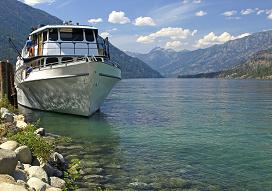
|
|
Lady of the Lake |
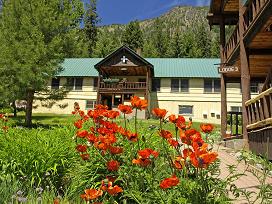
|
| at Holden village |
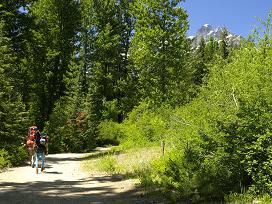
|
|
Bonanza Peak looms WAY above as we start uptrail from Holden. |
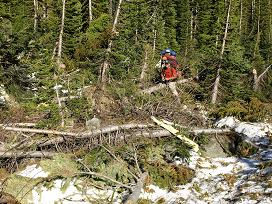
|
|
Devastation by the avalanche makes for rougher travel. |
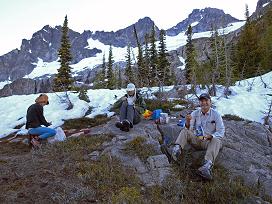
|
|
supper at Holden Pass |
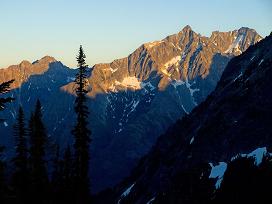
|
|
Sunrise on neighboring peaks. |
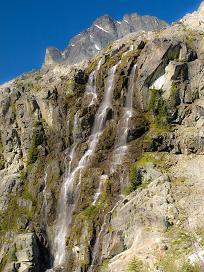
|
|
Waterfalls avoided on the ascent. |
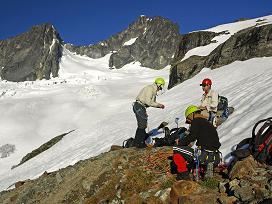
|
|
Preparing for glacier travel. Our goal is at top center above Greg's back. |
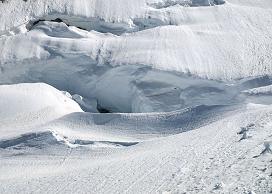
|
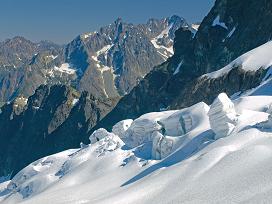
|
|
Gaping crevasses on the Mary Green glacier. |
House-sized seracs on the Mary Green Glacier. |
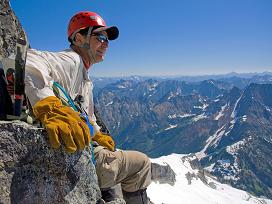
|
|
Dennis enjoys the view. |
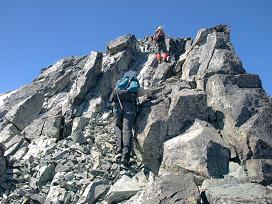
|
|
Steep rock just below the summit ridge. Greg in foreground, Adam higher up. |
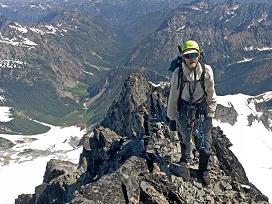
|
|
Greg on the narrow ridgewalk. |
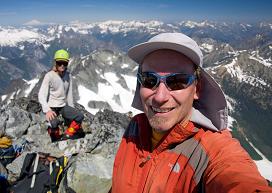
|
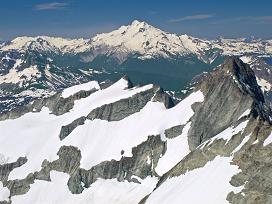
|
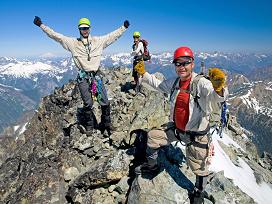
|
|
Grant Myers at the summit. |
Glacier Peak at the summit. |
Greg (left), Dennis (right), and Adam atop the confined summit area. |
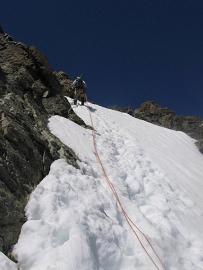
|
|
Our first rappel has us postholing in steep snow. (Photo by Greg Slayden) |
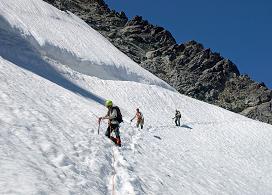
|
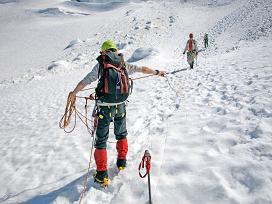
|
|
Traversing on-descent. Adam is clipping-through a picket. |
Adam "reels-in" Dennis at a break to remove crampons. |
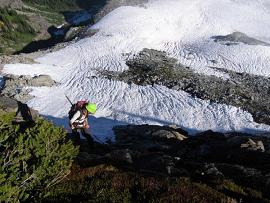
|
|
Adam rappels the cliff band with late afternoon shadows. (photo by Greg Slayden) |
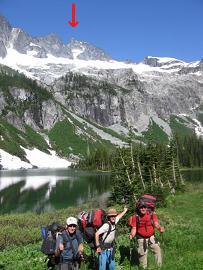
|
|
The summit (red arrow) seems unattainable from Holden Lake. (photo by Greg Slayden) |